- Home
- Robert Jordan
The Wheel of Time Companion
The Wheel of Time Companion Read online
Begin Reading
Table of Contents
About the Authors
Copyright Page
Thank you for buying this
Tom Doherty Associates ebook.
To receive special offers, bonus content,
and info on new releases and other great reads,
sign up for our newsletters.
Or visit us online at
us.macmillan.com/newslettersignup
For email updates on Robert Jordan, click here.
For email updates on Harriet McDougal, click here.
For email updates on Alan Romanczuk, click here.
For email updates on Maria Simons, click here.
The authors and publisher have provided this e-book to you without Digital Rights Management software (DRM) applied so that you can enjoy reading it on your personal devices. This e-book is for your personal use only. You may not print or post this e-book, or make this e-book publicly available in any way. You may not copy, reproduce, or upload this e-book, other than to read it on one of your personal devices.
Copyright infringement is against the law. If you believe the copy of this e-book you are reading infringes on the authors’ copyright, please notify the publisher at: us.macmillanusa.com/piracy.
This book is dedicated to all the readers who love The Wheel of Time.
INTRODUCTION
When I began editing The Eye of the World, I started a list of proper nouns, keeping them in a file known as “Raw Glossary.” It is a thing copy editors do—and I had been one, many and many a year ago, in a kingdom by the sea called Manhattan—with the idea that it is useful to have a canonical list of the spellings in a series. This “Raw Glossary” expanded through—oh I don’t know—about the first seven books; I then turned its care and maintenance over to Maria Simons, and the stalwart Alan Romanczuk.
This is not an extension, or an update, to the earlier reference called The World of Robert Jordan’s The Wheel of Time. Instead, this is an alphabetized adjunct that will allow the reader to check on characters, locations, herbs, kinship structures and many other things that appear in the series.
Now I, Harriet, join Maria and Alan in the comforting, cozy, editorial “we.”
We hope that this Companion will be useful for those reading or rereading the series, or those just wishing to refresh themselves about some aspect of the series. To those new to The Wheel of Time, though, we offer the following warning: there are SPOILERS in here! In fact, this volume might be called The Big Book of Spoilers because there are so many of them. Tread lightly, novices.
We in no way claim that each entry exhausts its subject. We had no desire to do so, mainly for practical considerations—the book’s size would be prohibitive. If you want detail beyond this Companion, we refer you to various impressive online efforts, such as Encyclopaedia-WoT.org and TarValon.net.
We also don’t claim that this book is without errors. Our entries draw as much as possible from Robert Jordan’s abundant notes, in order to show the reader what the writer wished to note for his own reference. One can infer that what Robert Jordan noted were points that were particularly important for him in the manuscripts; in some cases this was true. On the other hand, you can see that there are backstories on and descriptions of the various quirks and motivations of many characters, things that never made it into the books, but that informed the writer and helped him bring the characters to life.
Some entries were pulled directly from Robert Jordan’s notes with little alteration, to give you the flavor of his writing for his own personal use. As you will see, his phrases could be amusing at times.
While we hope that the reader will find a lot that is new and interesting here, we make certain disclaimers about the material. In some instances, the descriptions may vary from what is in the books. Writers constantly change their minds about characters, events and places in their creations, and adjustments often fail to be made in background notes. We have tried to correct all discrepancies of this sort, but sometimes let the more interesting ones stand, to show a change from the writer’s original intention compared with what finally arrived on the printed page. Or, the error remained because of our own oversight.
If this seems like a sneaky way to avoid taking responsibility for any errors found here, well, maybe it is; that’s for you to decide.
We at Bandersnatch Group wish to thank past, present and future fans of the Wheel of Time series for your devoted interest. You are the ones who have kept and who will continue to keep alive the world created by Robert Jordan. He said many times that he wished these books to be read for decades to come, and to be as relevant to future generations as they are to readers today. He sincerely loved his fans, and was always just a little humbled by the positive worldwide reception of his books. Thank you for staying through the whole set, all the way to Shayol Ghul.
Speaking of endings, we also wish to thank the talented writer Brandon Sanderson, who accepted the daunting challenge of seeing the Wheel of Time series to completion after Robert Jordan’s untimely death.
And most of all, thanks to Tom Doherty, publisher of The Wheel of Time, who stuck his neck out on this series many years ago, and never flagged in his support and belief. Without him and Brandon Sanderson, you would not be reading these lines today.
Onward.
ROBERT JORDAN
HARRIET MCDOUGAL
ALAN ROMANCZUK
MARIA SIMONS
A
a’Balaman, Rhys. See Rhys a’Balaman
a’Conn, Paitr do Fearna. See Paitr do Fearna a’Conn
a’Cowel, Nisain. See Nisain a’Cowel
a’dam. A ter’angreal used to control a channeler. Traditionally it was composed of a bracelet and a necklace connected by a silvery chain and was used to control female channelers. A modified a’dam without the chain was shown to work as well, and a device to control male channelers was discovered that was made of two bracelets and a necklace. The channeler being controlled wore the necklace, and the person wearing the bracelet had to be someone who could at least be taught to channel. The a’dam would fit itself to anyone who tried it on. The first a’dam was created by Deain, an Aes Sedai, to help Luthair Paendrag control the channelers he had found in Seanchan; it was then used on her. The a’dam created a link between the two women, a circle of two, with the woman wearing the bracelet always leading the circle. She could control the other woman’s flow of saidar completely, in addition to feeling her emotions and physical reactions and being able to influence or change them, or combine her own abilities with those of the other woman to channel a single, combined set of flows herself. This was known to Deain, of course, and to others after her, but that knowledge was eventually lost. After many years, the a’dam was used merely to control the damane and make her channel to command.
There were differences between the link entered by Aes Sedai and the link created by an a’dam. One was that while a circle of one man and one woman was possible, a man who could channel would be in intense pain and usually killed by wearing the bracelet. No experimentation was done regarding a woman wearing the bracelet and a man the necklace, but it might well have done the same thing. Even touching the a’dam while it was worn by a woman who could channel was painful for a man who could channel, and also for the woman. In a normal link, a woman who only had the potential to learn to channel could not be brought into it, but the a’dam could control those women, too. In addition, whatever the woman wearing the bracelet experienced was also felt by the woman wearing the necklace as though it had happened to her, but at several times the intensity; this feedback did not occur from the woman leading a normal link.
One odd effect of the a’dam wh
ich might be called beneficial was that it was impossible to burn oneself out while wearing one. The a’dam acted as a governor or buffer so that the maximum amount of the Power which could be drawn was just short of that which would damage the wearer. This was probably incorporated into the original device to prevent any possibility that a captive might manage to deliberately burn herself out in an effort to stop herself being used. See also Seanchan, damane, sul’dam, Domination Band and sad bracelets
a’Lordeine, Donel do Morny. See Donel do Morny a’Lordeine
a’Macansa, Cian do Mehon. See Cian do Mehon a’Macansa
a’Naloy, Roedran Almaric do Arreloa. See Roedran
a’Roihan, Elaida do Avriny. See Elaida do Avriny a’Roihan
a’Roos, Segan do Avharin. See Segan do Avharin a’Roos
a’solma. A gown with slits at the sides to allow movement; leggings were worn underneath. Tuon wore such a garment while practicing hand combat forms.
a’yron. The Old Tongue word for “watchers.”
Aan’allein. The Aiel name for al’Lan Mandragoran. It was the Old Tongue term for “One Man” or “Man Alone” or “Man Who Is an Entire People.”
Abaldar Yulan. The fiery Seanchan Captain of the Air, commanding all the fliers and subordinate to Captain-General Galgan. A member of the low Blood, Yulan was short, with the nails of his little fingers painted green, and he wore a black wig, cut in the appropriate hairstyle for his station, to conceal his baldness. His skin was coal dark. He wept after Miraj was killed, partly for the death of a friend and partly because the Ever Victorious Army had been defeated. Yulan’s raken were one of the points of contention between Galgan and Suroth. He proposed raiding the White Tower and worked to make it happen. Under Compulsion from Mesaana, he attempted to keep Tuon from sending forces to help Mat win the Last Battle; he was exposed by a viewing of Min’s.
Abar. A Domani sword-swallower and fire-eater with Luca’s show. His brother was Balat.
Abareim, Ellid. See Ellid Abareim
Abayan. A nation that rose after the Trolloc Wars. It occupied most of the western part of what came to be known as Arad Doman.
Abdel Omerna. A Child of the Light who was a Lord Captain, Anointed of the Light and a member of the Council of Anointed. Tall, with dark eyes set in a bold, strong-chinned face and waves of white at his temples, he was thought to be spymaster of the Children of the Light, but he was actually a patsy put in place by Pedron Niall to draw attention from Sebban Balwer, the true spymaster. Omerna was tricked into assassinating Pedron Niall and was killed by Eamon Valda.
Abell Cauthon. A farmer in Emond’s Field. Born in 955 NE, he was known for his horse-trading abilities and proficiency with the quarterstaff and Two Rivers bow. He was the husband of Natti Cauthon and father of Matrim, Bodewhin and Eldrin. He and Tam al’Thor traveled to Tar Valon to try to find out what happened to their sons, but were told nothing. Abell managed to avoid being taken by the Whitecloaks, and helped rescue his wife and daughters, who were taken. He helped Perrin plan the defense of Emond’s Field, and fought bravely in the Last Battle.
Abelle Pendar. A lord in Andor and the High Seat of House Pendar, a strong House with many retainers. His sigil was three six-pointed golden stars, one above and two below, on a field of seven vertical red-and-white stripes. Pendar had a hard angular face and graying hair. He supported Morgase when she gained the throne. Under Rahvin’s influence, Morgase exiled him from Caemlyn. He was one of four nobles who met Rand, along with Dyelin, Ellorien and Luan, when Rand told them he wanted Elayne on the Andoran throne. After Elayne took Caemlyn, he stood for Trakand.
Abila. A somewhat large town in Amadicia located forty leagues south of Bethal. A wooden bridge over a stream led into the town, which had paved streets and stone marketplaces. There were several tall watchtowers and many four-story buildings with slate roofs, but it was not a walled town. Balwer told Perrin that he believed the Prophet had been there recently, and that Masema had torn down a number of inns and disreputable houses in the town. Perrin and his men, along with Aes Sedai, visited the Prophet and told him that they would accompany him to the Dragon Reborn, who had summoned him. Faile learned from her agents that the Prophet had met with the Seanchan, but before she could warn Perrin, she and her group were all captured by Sevanna and the Shaido Aiel, except Berelain, who escaped.
Ablar, Logain. See Logain Ablar
Abor’maseleine. An Ogier-built city in Aridhol, one of the Ten Nations after the Breaking.
Abors. An Asha’man who did not need to be Turned to follow Taim and work for the Shadow. He held a shield on Androl; Androl used his knowledge of Evin’s madness to make Evin attack and kill Abors.
Abunai. A village where it was never cold on the Sea of L’Heye in Seanchan. It was the birthplace of Bethamin.
Academy of Cairhien. A center of learning and invention established in Lord Barthanes’ palace in the city of Cairhien. Its headmistress was Idrien Tarsin. Rand established the school in case he did end up breaking the world, in the hope of saving something.
Academy of the Rose. A center of learning and invention in Caemlyn. Established by Rand, it was taken over by Elayne, who dedicated it in memory of her mother. She insisted on financing it; she wanted it to be Andor’s, not Rand’s.
Accan, Jurad. See Jurad Accan
Accepted, the. The level after novice that a student had to achieve before becoming Aes Sedai. Normally, a novice was recommended for testing by the Mistress of Novices. This recommendation had to be approved by the Amyrlin Seat, by a Sitter, or by three sisters. An approval by three sisters or one Sitter could be rejected by the Amyrlin, and she could only be overruled by the lesser consensus of the Hall. Even if the Mistress of Novices did not make such a recommendation, the testing could be ordered by the Amyrlin acting in conjunction with at least two Sitters, or by three Sitters, or by six sisters. A recommendation in this manner could be rejected by the Amyrlin or in various other ways. Thus, a recommendation by six sisters could be rejected by three Sitters, and a recommendation by three Sitters could be rejected if three others felt it unsafe or unwise. If the Amyrlin herself ordered the testing, she could be overruled by six Sitters.
The point to be emphasized here is that the Amyrlin could stop a woman from being tested, and there was rarely any possibility of her being overruled, but it was much harder for her to force the testing. There were dangers in the testing, but none in waiting, so it was easier to stop even the Amyrlin from forcing a test than it was to stop her from refusing approval for a test.
The test required a novice to pass through a ter’angreal composed of three arches of silvery metal; it was located in the bowels of the White Tower. Three chances were offered to walk through the arches. The offer might be refused twice, but if it was refused the third time, the woman was put out of the Tower. Many women refused the arches a time or two. Once the test began, it had to be completed by passing through each arch, to face one’s fears of what was, what is and what will be. A woman who refused to complete her three journeys was put out of the Tower even if it was the first time she had a chance at the test.
Once she completed the test, she received her Great Serpent ring, which she wore on the third finger of her left hand. The Accepted wore a white dress just like that worn by novices except that there were seven narrow bands of color at the hem of the skirt, representing the seven Ajahs. A more formal dress would also have bands of color on the cuffs. An Accepted’s room was larger than a novice’s room, with more comforts. Less confined by rules than novices, Accepted were allowed to choose their own areas of study, within limits; they also taught novice classes. The average Accepted studied for ten years before passing the test to be raised to Aes Sedai.
Acedone, Rubinde. See Rubinde Acedone
acem. An herb used to relieve headache.
Ackley Farren. An Andoran man mentioned by a farmer who gave Rand and Mat a short ride on their way to Caemlyn. The farmer thought that the story of Darkfriends in Mark
et Sheran was the funniest story he had heard since Ackley Farren got drunk enough to spend the night on an inn roof.
Adamad. One of Renald Fanwar’s farmhands.
Adan al’Caar. A Two Rivers boy whom Mat Cauthon tried to trick into believing that ghost dogs had been seen in Emond’s Field.
Adan, Heran. The governor of Baerlon, Andor. When the Whitecloaks came to Baerlon, he decreed that only ten at a time could enter the city.
Adan. A Jenn Aiel around the time of the Breaking. When Adan was five years old, he left Paaran Disen with his father Jonai and the rest of his family. Years later, he and Jonai met a group of Ogier who told them that there was trouble in the north. Jonai had a heart attack, and as he died, he told Adan to take the people south. Adan married Siedre, and they had five children: Rhea, Malind, Sorelle, Elwin and Jaren. All either died or were carried off by bandits; he was left with Malind’s wife Saralin and her children Maigran and Lewin. After Lewin and his friends used violence to save Maigran and another girl, Colline, Adan disowned Lewin.
Adanza. A great city of the Age of Legends. It thrived with a vitality in its beauty matched only by the vitality of its people.
Adar. The fifth month of the year.
Adarra, Bili. See Bili Adarra
Adarra, Jaim. The captain of the Snow Goose, which took Moiraine, Lan, Perrin, Loial and Faile from Remen to Illian. He was short and slight.
Adden. The leader of the band of Darkfriends who kidnapped Egwene, Nynaeve and Elayne on behalf of three Myrddraal; he was killed by being pinned to the wall by an Aiel spear.
Adela. A lanky young woman with a pimply face who worked as a stablehand for Toke Fearnim in Jurador.
Adeleas Namelle. An Aes Sedai of the Brown Ajah and the rebel contingent, with a strength level of 23(11). Born in 735 NE, she went to the White Tower with her sister Vandene in 752 NE. After spending five years as a novice and five years as Accepted, she was raised to the shawl in 762 NE. She progressed in near lockstep with her sister; they were raised within a month of each other in both instances. She was 5'4½" tall, slender and graceful, with dark eyes and a straight back—a mirror image of her sister. She wore her nearly white hair gathered at the back of her neck.

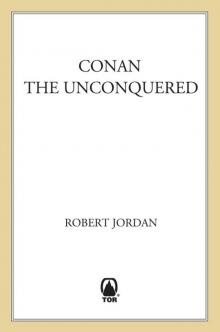 Conan the Unconquered
Conan the Unconquered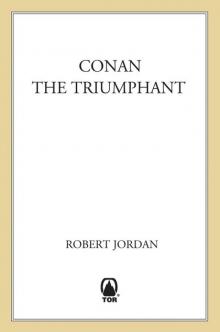 Conan the Triumphant
Conan the Triumphant The Eye of the World
The Eye of the World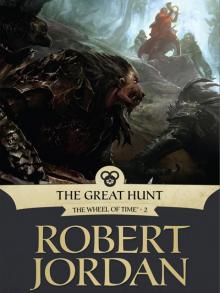 The Great Hunt
The Great Hunt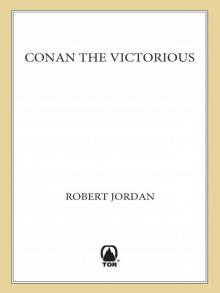 Conan the Victorious
Conan the Victorious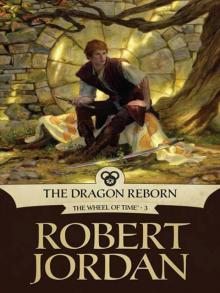 The Dragon Reborn
The Dragon Reborn The Fires of Heaven
The Fires of Heaven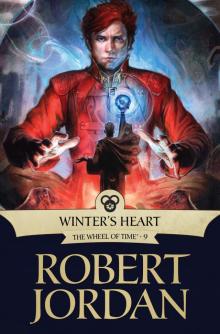 Winter's Heart
Winter's Heart Lord of Chaos
Lord of Chaos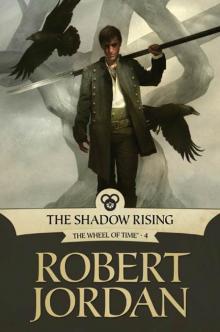 The Shadow Rising
The Shadow Rising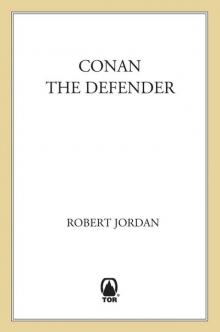 Conan the Defender
Conan the Defender The Strike at Shayol Ghul
The Strike at Shayol Ghul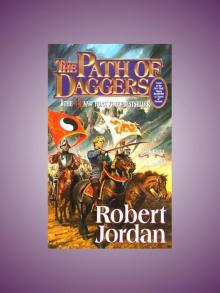 The Path of Daggers
The Path of Daggers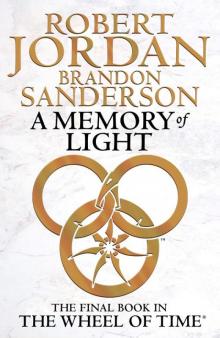 A Memory of Light
A Memory of Light Knife of Dreams
Knife of Dreams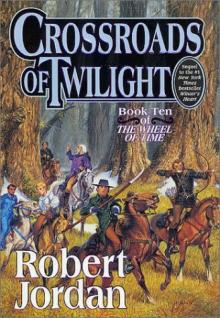 Crossroads of Twilight
Crossroads of Twilight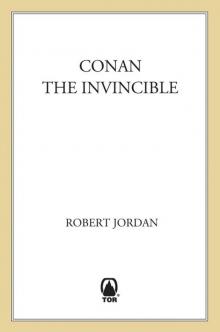 Conan the Invincible
Conan the Invincible The Gathering Storm
The Gathering Storm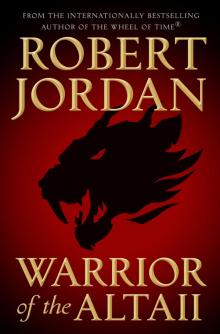 Warrior of the Altaii
Warrior of the Altaii A Crown of Swords
A Crown of Swords The Wheel of Time
The Wheel of Time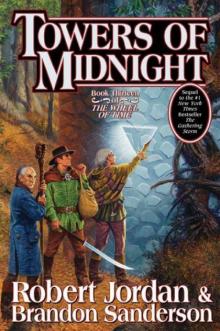 Towers of Midnight
Towers of Midnight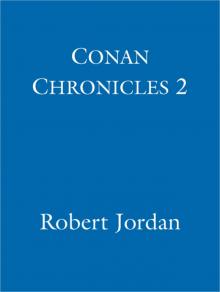 Conan Chronicles 2
Conan Chronicles 2 Conan the Magnificent
Conan the Magnificent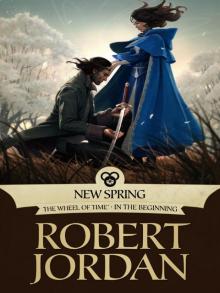 New Spring
New Spring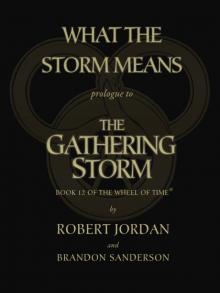 What the Storm Means
What the Storm Means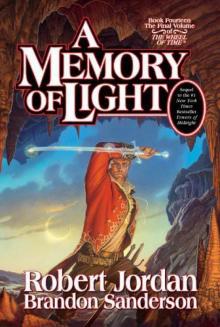 A Memory of Light twot-14
A Memory of Light twot-14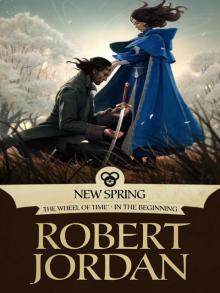 New Spring: The Novel
New Spring: The Novel Towers of midnight wot-13
Towers of midnight wot-13 A Memory Of Light: Wheel of Time Book 14
A Memory Of Light: Wheel of Time Book 14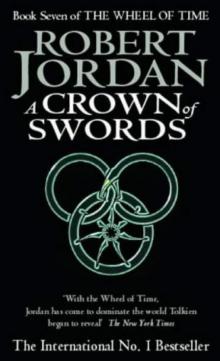 A Crown of Swords twot-7
A Crown of Swords twot-7 Lord of Chaos twot-6
Lord of Chaos twot-6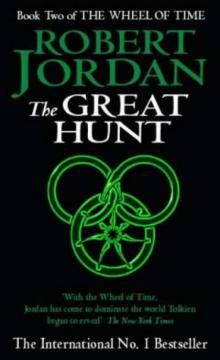 The Great Hunt twot-2
The Great Hunt twot-2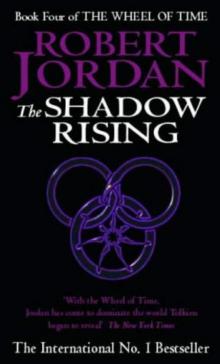 The Shadow Rising twot-4
The Shadow Rising twot-4![Wheel of Time-11] Knife of Dreams Read online](http://i1.bookreadfree.com/i1/04/03/wheel_of_time-11_knife_of_dreams_preview.jpg) Wheel of Time-11] Knife of Dreams
Wheel of Time-11] Knife of Dreams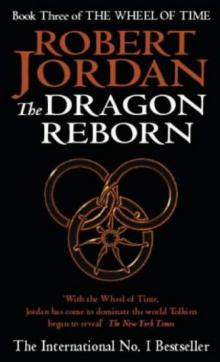 The Dragon Reborn twot-3
The Dragon Reborn twot-3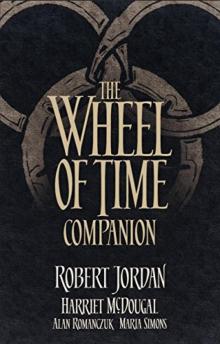 The Wheel of Time Companion
The Wheel of Time Companion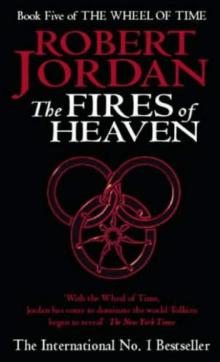 The Fires of Heaven twot-5
The Fires of Heaven twot-5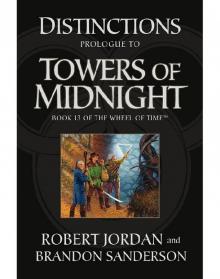 Prologue to Towers of Midnight
Prologue to Towers of Midnight The Path of Daggers - The Wheel of Time Book 8
The Path of Daggers - The Wheel of Time Book 8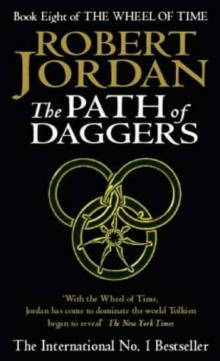 The Path of Daggers twot-8
The Path of Daggers twot-8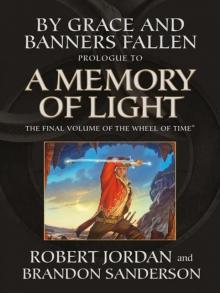 By Grace and Banners Fallen: Prologue to a Memory of Light
By Grace and Banners Fallen: Prologue to a Memory of Light Crossroads of Twilight twot-10
Crossroads of Twilight twot-10 The Gathering Storm twot-12
The Gathering Storm twot-12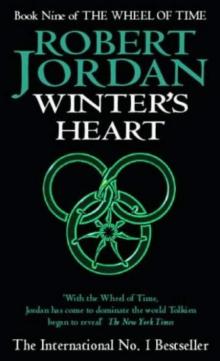 Winter's Heart twot-9
Winter's Heart twot-9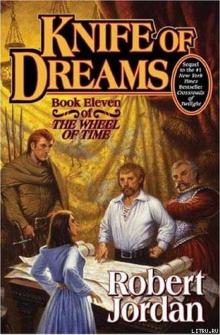 Knife of Dreams twot-11
Knife of Dreams twot-11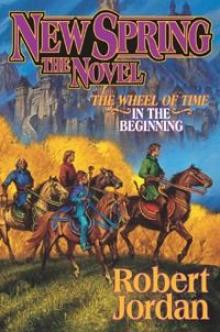 New Spring: The Novel (wheel of time)
New Spring: The Novel (wheel of time)